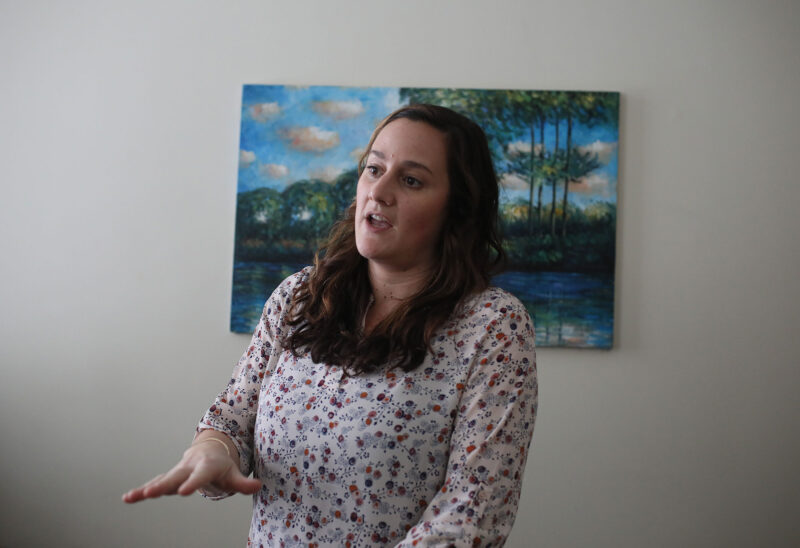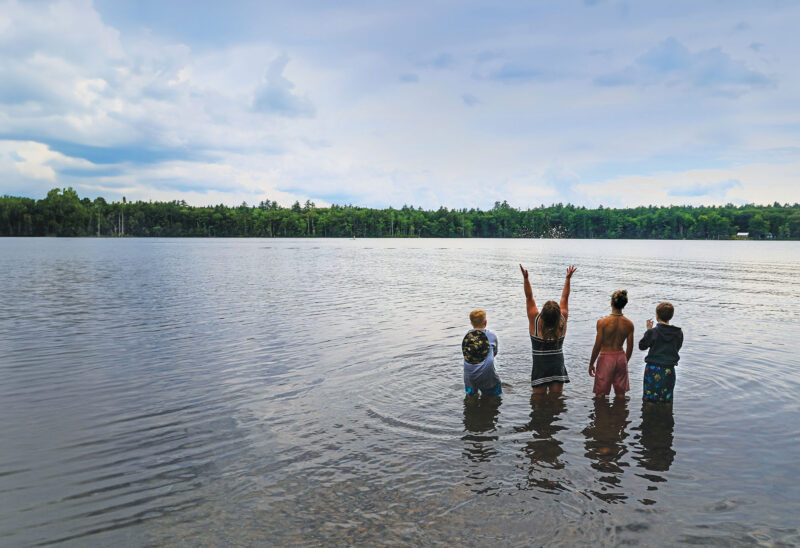On a midwinter night, more than a dozen people assemble in the sanctuary of the Iglesia Pentecostal in Nashua for an urgent conversation about the environment. They have come to talk about how a proposed asphalt plant might affect the environment of this majority Latino and Black neighborhood — and to organize against it.
A woman named Lucia raises her hand. “I am worried about the longterm effects of this,” she says, about the plant proposed in an industrial zone that sits just 800 feet from a residential area. “We don’t want our people to get sick. We want to have a safe neighborhood.”
Arnold Mikolo, an environmental justice advocate for Conservation Law Foundation, stands at the front of the sanctuary speaking through a Spanish language interpreter.
“We have the power,” he says to the assembly, “…the power to decide what our neighborhood will look like. Your voice really matters.”
Every person in the group pledges to spread the word, to distribute flyers and to attend an upcoming planning board meeting to show opposition to the plant.
Mikolo’s organizing and advocacy work is part of a growing environmental justice movement, which makes clear that “the environment” is not just the beckoning woods and streams and mountains of New Hampshire. It is also the neighborhoods with unsafe streets, disproportionately high rates of asthma, apartments with lead paint and where people have little or no access to green space or fresh-grown food.
The attainment of environmental justice in New Hampshire, Mikolo said, would mean “equal participation of everyone, regardless of race, income, religion — but also fair treatment in distributing environmental benefits and alleviating the environmental burden that marginalized communities have been carrying for years.”
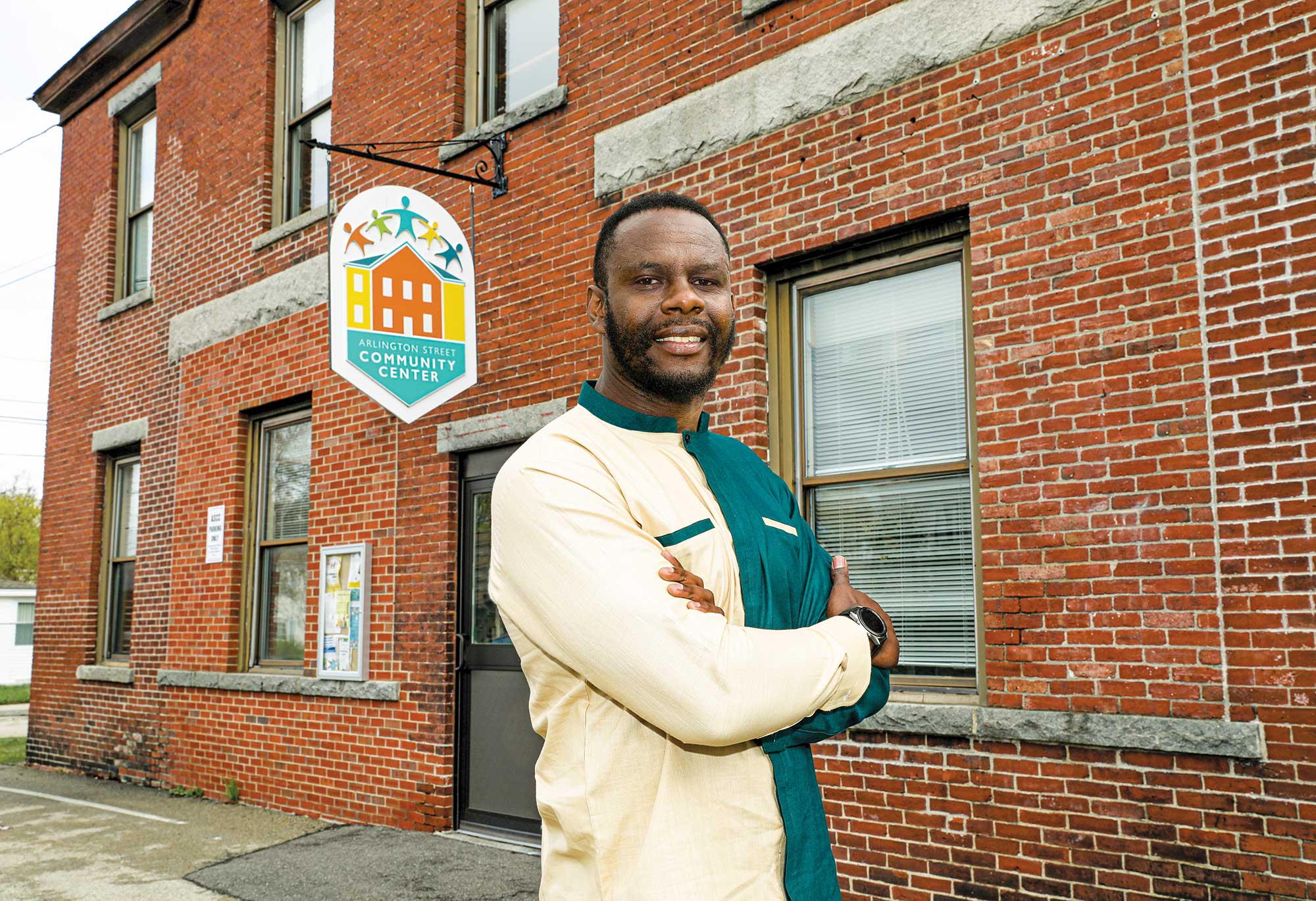
Arnold Mikolo, an environmental justice advocate for Conservation Law Foundation. (Photo by Cheryl Senter.)
Mikolo’s work has been focused primarily on Manchester. A three-year grant from the Foundation supported the hiring of a second advocate, Jordan Thompson, to expand CLF’s environmental justice work to Nashua.
Together we thrive
The Foundation’s new strategic plan, Together We Thrive, represents a commitment to incorporating equity, racial justice and economic security across its work — including in its environmental grantmaking. Many voices are informing the Foundation’s new environmental strategy, including those who responded to surveys of the environmental and social services fields, interviews with grantees, and community members who gave input about environmental grantmaking and the Foundation’s strategic plan.
While many organizations that provided input are already incorporating diversity, equity and inclusion in their work, they reported that the field needs more time and funding to do so; increased funding to grassroots organizations; funding to promote resiliency in the face of climate change; and time and resources for learning, community outreach and partnership-building.
Based on that input, the Foundation is considering ways to focus its environmental grantmaking on increased environmental justice efforts; promoting increased access to the outdoors; helping conservation nonprofits to deepen community engagement and partnerships and support learning communities to incorporate equity more fully; and protecting people and ecosystems from the worsening effects of the climate crisis. In just the past 10 years, the Charitable Foundation has made nearly $70 million in grants to help protect the environment.
“Open space and natural resources are among New Hampshire’s most treasured assets,” said Rosalind Erwin, who manages environmental grantmaking at the Foundation. “But access to those resources and their benefits is inherently unequal, and has been for centuries — starting with the dispossession of Native Americans from their land. Today, many barriers exist that come between communities of color, people with disabilities and people with low incomes and the enjoyment of and benefit from the outdoors. The Foundation wants to do its part — alongside many others — to remove those barriers and inequities.”
Nature deprived
“The Nature Gap,” a study by the Center for American Progress, found that 90% of people of color in New Hampshire live in a census tract considered “nature deprived” compared with just 17% of white people. Low-income communities and communities of color are more likely to face the negative impacts of an unsafe environment, with greater proximity to landfills, industrial plants and unsafe streets and housing. These communities are also poised to suffer the greatest impacts of the climate crisis, in part due to their distance from natural areas that buffer against extreme heat, poor air quality and floods.
Tension and complexity are inherent in this work. The environmental and philanthropic fields have long lacked diversity in staffing. And the land that is now New Hampshire is the unceded homeland of the Abenaki people. Foundation staff are in conversation with Native people, building relationships, nurturing partnerships and learning.
“We are learning about the complexities, the needs and opportunities, and are grateful for the input of indigenous communities who have always been present in this region,” said Sandeep Bikram Shah, Foundation senior program officer and racial justice advisor.
By and for community
Existing efforts by New Hampshire nonprofits highlight the possibilities and promise of incorporating equity in environmental work.
At the All Persons Trail at the Manchester Cedar Swamp Preserve, people who use wheelchairs are on the wide, hard-packed trail almost every day that there is not snow on the ground. The trail, a project of The Nature Conservancy, incorporates Abenaki teachings about natural history on artfully designed signposts. Critical information and an audio tour are provided in both English and Spanish, benches provide resting spots and destinations along the 1.2-mile loop, bathrooms are handicapped accessible and gender-neutral. TNC worked with the Manchester Transit Authority to add a city bus stop at the parking lot. The trail is 10 minutes from downtown Manchester — the state’s largest and most diverse population center.
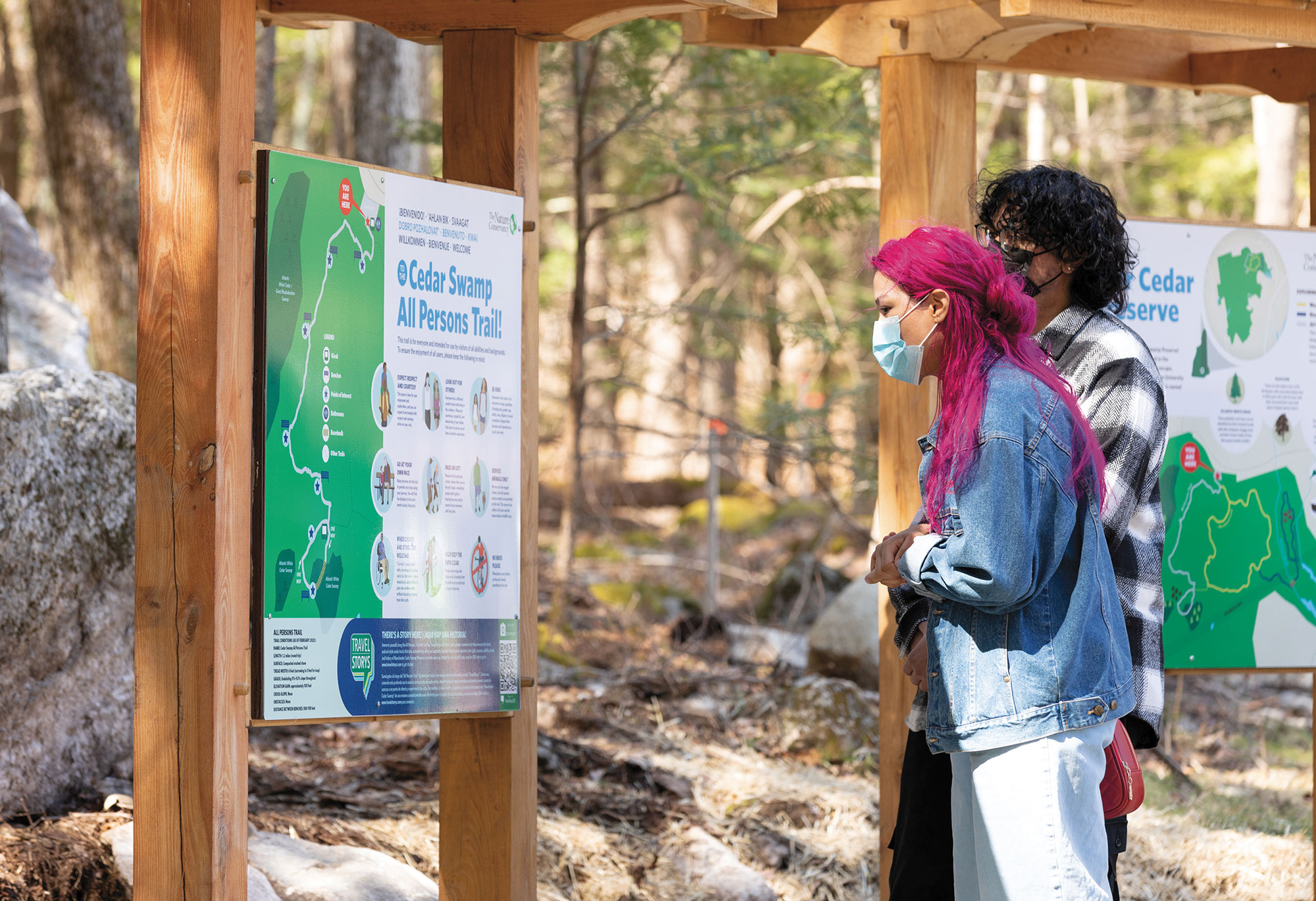
Visitors check out the new Cedar Swamp All Persons Trail map on opening day, Earth Day 2022. (Photo by Rooted in Light Media.)
Hundreds of people gave input into the design and features of the trail. “We wanted to build this with the community, not for the community,” said Sheila Vargas Torres, community partnerships manager at TNC.
In 2021, about 450 people a month visited the 640-acre preserve. In 2022, after the All Persons Trail opened, monthly visitation to the preserve almost tripled.
Other nonprofits around the state have opened or are working on accessible trails, and TNC published an extensive report on the All Persons Trail to assist other organizations in similar efforts.
TNC has also piloted a program with the Manchester Transit Authority to run buses from the city to other outdoor recreation spots, including state parks.
“Being outdoors is really good for people’s physical and mental health,” Vargas said. “Why should that opportunity be blocked for some people?”
And nonprofits are teaming up to bring environmental benefits to more people. At the Winchester Learning Center, an early-childhood education center, 85% of children who attend come from families with financial need. The Monadnock Conservancy helped the center negotiate, fund and buy a connecting parcel of land and create a community nature trail and outdoor learning space. The trail includes stretches that are accessible to strollers and wheelchairs, and kids who attend the center now spend part of almost every day in nature.
“The number of children who don’t have access to playgrounds, or who live in apartments between the river and the road — they have nowhere to play outside,” said center Executive Director Roberta Royce. The trail is open to the public and also provides a throughway for children who live in nearby apartments to get to the downtown area without having to walk or ride bikes on the heavily traveled Route 10.
Other partnerships are active across the state: Land trusts have created community gardens; the Society for the Protection of New Hampshire Forests has worked with the Black Heritage Trail of New Hampshire to document and mark the Black history of land under its stewardship — and build a sense of belonging in the outdoors. And more.
Addressing climate change
Nonprofits are also working to promote renewable energy, energy efficiency and other climate mitigation strategies — all areas in which New Hampshire lags behind its neighboring states, which have more robust public policy and leadership on climate issues. Climate change affects everyone, but low-income communities and communities of color are affected most.
Mikolo points to a simple example of that in New Hampshire. Just walk or bike south on one of Manchester’s “tree streets” on a hot summer day, he says. When you cross Bridge Street and leave the wealthier, whiter part of town, the tree canopy disappears, traffic is more congested and the temperature rises perceptibly.
The protection of natural resources in New Hampshire should benefit every person who calls New Hampshire home. That means hearing from many voices and considering many perspectives.
“You want to empower community members who are impacted to be the leading voices,” Mikolo said. “You want to have them engaged and activated and at the forefront. We have a long way to go, but we have started the journey.”

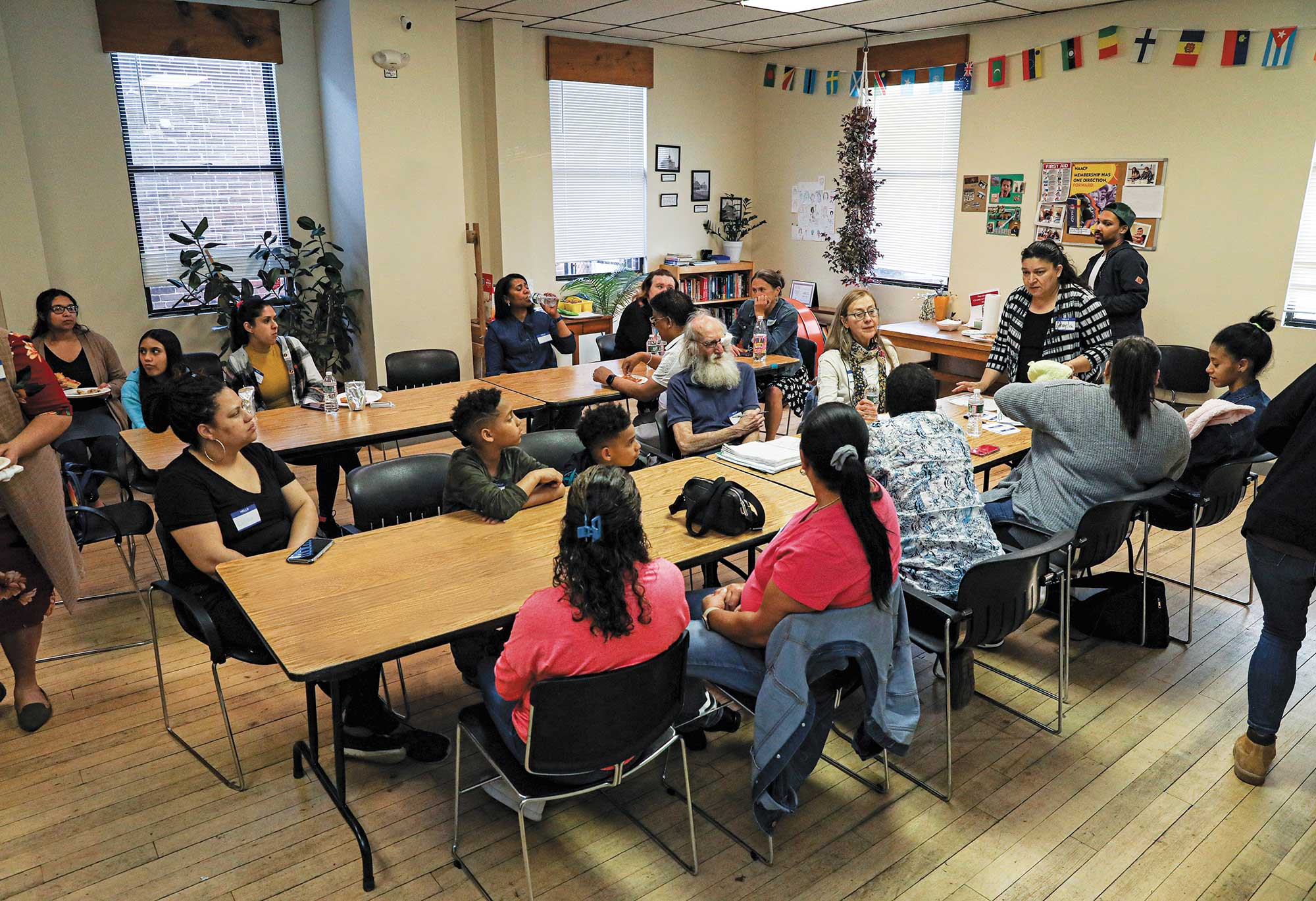






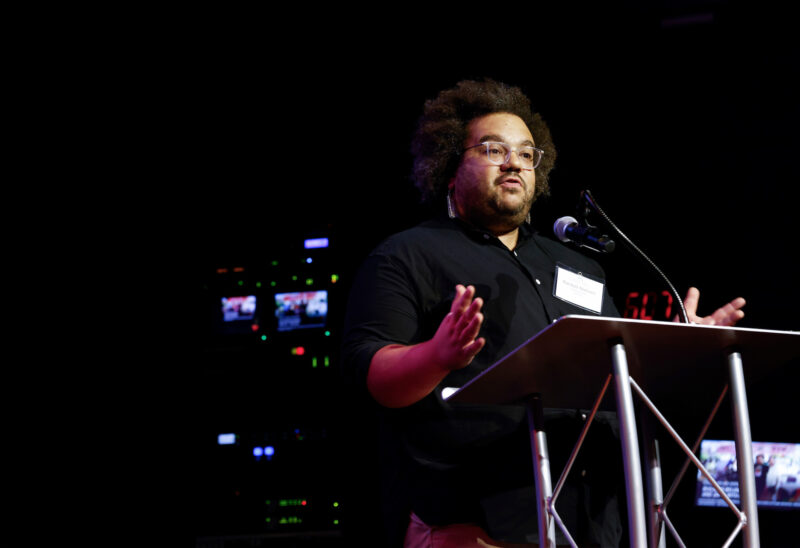
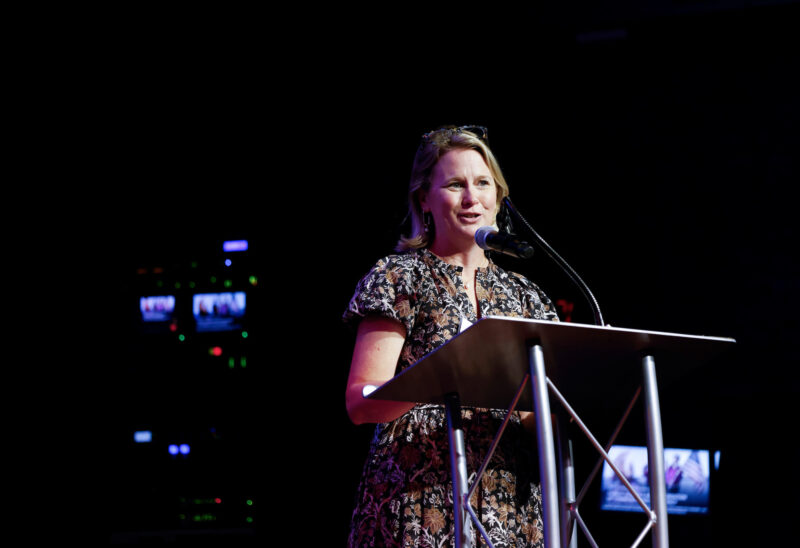

![Oluwakemi Olokunboyo of Dover received a McNabb scholarship to study nursing at Great Bay Community College [Photo by Cheryl Senter]](https://www.nhcf.org/wp-content/uploads/2024/05/Scholarship-Hero-800x548.jpg)

![Rev. Heidi Carrington Heath joined Seacoast Outright. [Photo by Cheryl Senter]](https://www.nhcf.org/wp-content/uploads/2024/05/Heidi-Carrington-Thumbnail-800x548.jpg)
![Dr. Jennie Hennigar treats a patient at the Tamworth Dental Center [Photo by Cheryl Senter]](https://www.nhcf.org/wp-content/uploads/2024/05/TCCAP-Hero-800x548.jpg)



